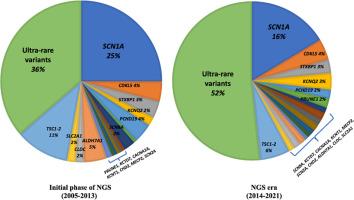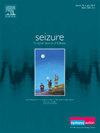Therapeutic implications of etiology-specific diagnosis of early-onset developmental and epileptic encephalopathies (EO-DEEs): A nationwide Turkish cohort study
IF 2.7
3区 医学
Q2 CLINICAL NEUROLOGY
引用次数: 0
Abstract
Objective
To evaluate the etiology-specific diagnosis of early-onset developmental epileptic encephalopathies (EO-DEEs) in a nationwide Turkish cohort to determine the implications for therapeutic management.
Methods
The cohort comprised 1450 patients who underwent EO-DEE. The utility of genetic testing was assessed with respect to the initial phases of next generation sequencing (NGS) (2005–2013) and the current NGS era (2014–2022). A predefined four-stepwise diagnostic model was evaluated using cost-effectiveness analysis. The diagnostic and potential therapeutic yields of the genetic tests were subsequently determined.
Results
Gene-related EO-DEEs were identified in 48.3 % (n = 701) of the cohort: non-structural genetic (62.6 %), metabolic genetic (15.1 %), and structural genetic (14.1 %). The most common nonstructural genetic variants were SCN1A (n = 132, 18.8 %), CDKL5 (n = 30, 4.2 %), STXBP1 (n = 21, 2.9 %), KCNQ2 (n = 21, 2.9 %), and PCDH19 (n = 17, 2.4 %). The rate of ultra-rare variants (< 0.5 %) was higher in the NGS era (52 %) than that in the initial phase (36 %). The potential therapeutic yields with precision therapy and antiseizure drug modification were defined in 34.5 % and 56.2 % in genetic-EO-DEEs, respectively. The diagnostic model provided an etiology-specific diagnosis at a rate of 78.7 %: structural (nongenetic) (31.4 %), genetic (38.5 %), metabolic (6.1 %), and immune-infectious (2.8 %). Based on a cost-effectiveness analysis, the presented diagnostic model indicated the early implementation of whole-exome sequencing for EO-DEEs.
Significance
In the present cohort, the higher rate (48.3 %) of gene-related EO-DEE diagnoses in the NGS era provides a potential therapeutic management plan for more patients.

早发性发育性癫痫性脑病(EO-DEEs)病因特异性诊断的治疗意义:土耳其全国性队列研究。
目的评估土耳其全国队列中早发性发育性癫痫性脑病(EO-DEEs)的病因特异性诊断,以确定对治疗管理的影响:方法:该队列由 1450 名接受 EO-DEE 的患者组成。根据新一代测序(NGS)的初始阶段(2005-2013 年)和当前的 NGS 时代(2014-2022 年)对基因检测的效用进行了评估。通过成本效益分析,对预先确定的四步诊断模型进行了评估。随后确定了基因检测的诊断和潜在治疗效果:结果:48.3%(n = 701)的队列中发现了与基因相关的 EO-DEE:非结构基因(62.6%)、代谢基因(15.1%)和结构基因(14.1%)。最常见的非结构性遗传变异是 SCN1A(n = 132,18.8 %)、CDKL5(n = 30,4.2 %)、STXBP1(n = 21,2.9 %)、KCNQ2(n = 21,2.9 %)和 PCDH19(n = 17,2.4 %)。NGS 时代的超稀有变异率(< 0.5 %)(52 %)高于初始阶段(36 %)。在基因-EO-DEEs 中,分别有 34.5% 和 56.2% 的患者确定了精准治疗和抗癫痫药物调整的潜在治疗收益。诊断模型提供的病因特异性诊断率为 78.7%:结构性(非遗传性)(31.4%)、遗传性(38.5%)、代谢性(6.1%)和免疫感染性(2.8%)。根据成本效益分析,提出的诊断模型表明,应尽早对 EO-DEEs 实施全外显子组测序:在本研究队列中,NGS 时代与基因相关的 EO-DEE 诊断率较高(48.3%),为更多患者提供了潜在的治疗管理方案。
本文章由计算机程序翻译,如有差异,请以英文原文为准。
求助全文
约1分钟内获得全文
求助全文
来源期刊

Seizure-European Journal of Epilepsy
医学-临床神经学
CiteScore
5.60
自引率
6.70%
发文量
231
审稿时长
34 days
期刊介绍:
Seizure - European Journal of Epilepsy is an international journal owned by Epilepsy Action (the largest member led epilepsy organisation in the UK). It provides a forum for papers on all topics related to epilepsy and seizure disorders.
 求助内容:
求助内容: 应助结果提醒方式:
应助结果提醒方式:


